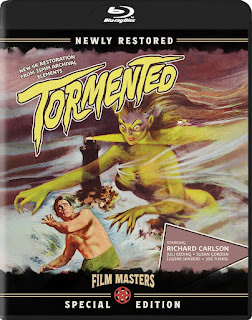Warning from Space
Mysterious UFO sightings over Japan have the population feeling nervous, especially when those vessels discharge starfish-shaped cyclopean messengers from the planet Paira. Realizing their appearance is a shock, the Pairans transform one of their crewmembers into the appealing likeness of a popular nightclub celebrity. But by the time her warning of an impending collision with a rogue planet is delivered, the Earth is already in dire straits with world leaders arguing over the disclosure of their nuclear programs to be used as an interplanetary defense. It's left to a levelheaded team of scientists and astronomers to join forces with the Pairans and prevent the impending apocalypse.
A fairly obvious combination of When Worlds Collide and The Day the Earth Stood Still, Koji Shima's film is too talky by half, focusing on a quartet of bland old men (and their slightly younger daughters, sons and assistants) who shuffle through scenes lacking in inherent drama. The aliens themselves are a clever visual exclamation but their appearance is over far too soon. From there, the audience has a long wait for the arrival of Planet R and its inventible onscreen wave of destruction, which includes earthquakes, fires and floods (none of which can compare to Hollywood's disaster porn of the time).
What Warning from Space does have going for it is a more mature handling of the material. Besides the aforementioned starfish-people, the film takes its crisis seriously, documenting the panic and chaos produced by the situation with a far more realistic approach than rival Toho studio's monster epics. This is a world that feels lived in, not just a model just waiting to be stomped upon. Koji Shima's camera work involves complicated dollies and shot compositions that reflect this serious minded approach. And the addition of color adds a whole new dimension to the Japanese sci-fi repertoire, searing the screen with ominous reds, purples and oranges during Planet R's final approach.
Arrow Video's Blu-ray debut is a welcome one, despite the film's shortcomings. It might only appeal to completionists, but there more of them out there than you think (myself included). The transfer suffers a bit of damage in the middle portions, but otherwise looks very nice for a film that was once consigned to the public domain bargain bin. Extras include a new commentary by Stuart Galbraith, trailers, image galleries, collector's booklet and first-ever HD transfer of the American release version of the film with a newly restored English dub track.




Comments
Post a Comment